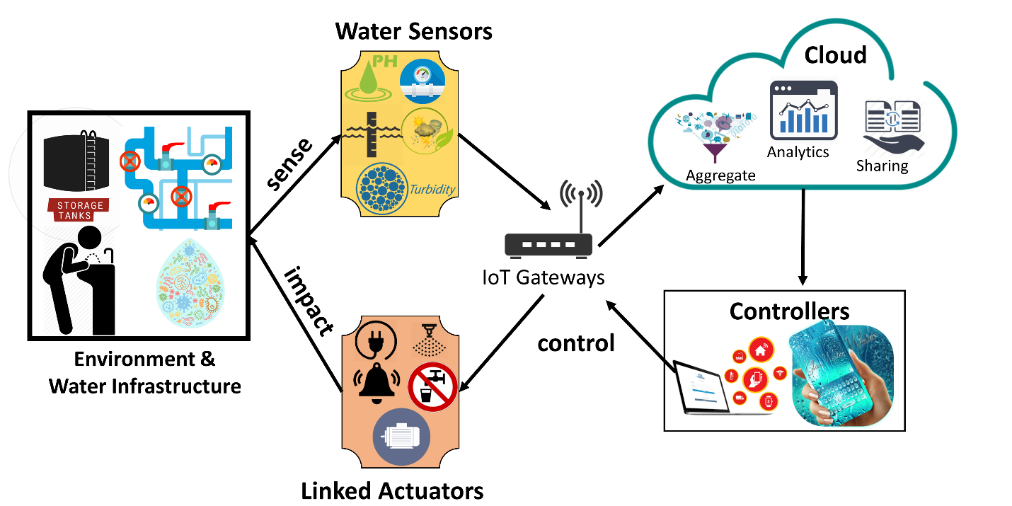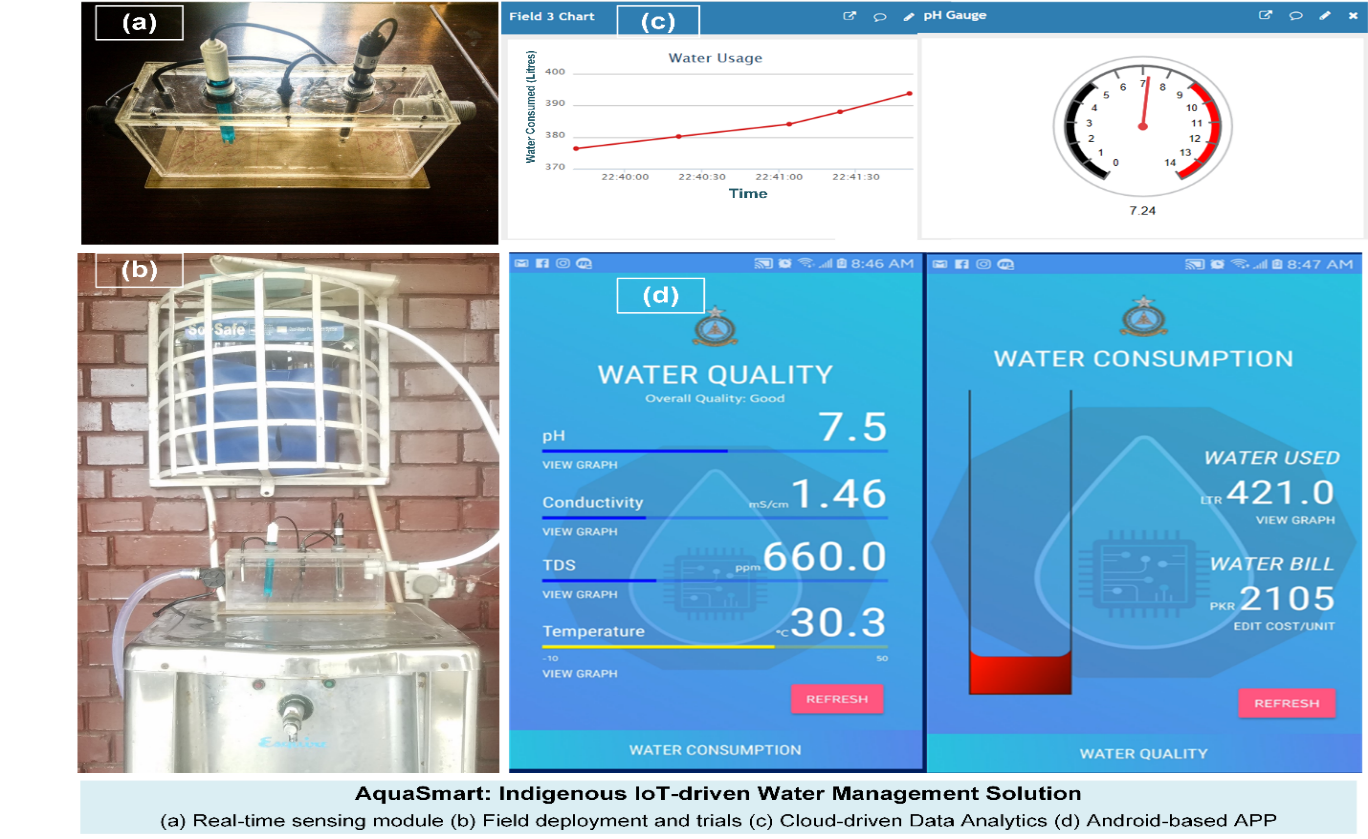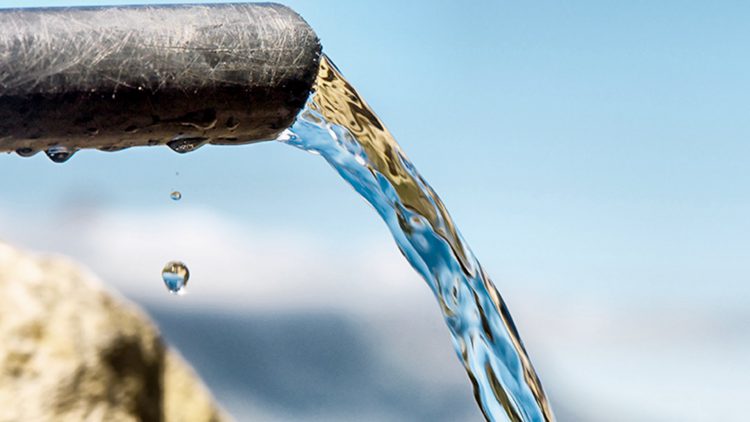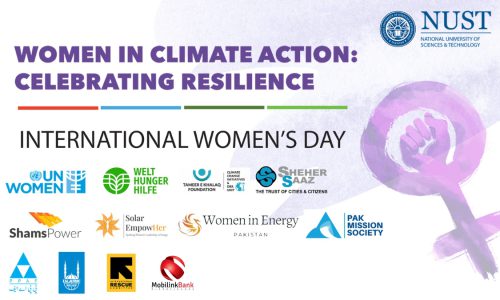Introduction
Water is regarded as one of the most essential commodities for the survival of living things. With the increase in population, there exists an exponentially rising need to conserve the consumption and monitor the quality of water being provided to the consumers for drinking, agriculture and other purposes. Pakistan is experiencing an impending water crisis, linked both with its quantity and quality. A recently published report by the Consumer Rights Commission of Pakistan, states that every fifth Pakistani child under the age of five suffers from water-borne diseases out of which, 0.25 million die every year. The report further highlighted that the loss to Pakistan’s economy due to water-related diseases ranges between the US $ 380 to 883 million per annum.
One of the prime causes for these alarming statistics is the lack of smart solutions to monitor and advertise water quality for consumer awareness and enhance its utilization efficiency through automated management and control systems. The same can be achieved by benefiting from the recent advancements in the Internet of Things (IoT) technologies. The phrase “Internet of Things” (IoT) entails connecting real-world objects over the Internet after equipping them with abilities to sense, identify, think, control and respond, on behalf of humans. IoT systems foster digital-physical integrations, thus offering many innovative use-case scenarios for smarter communities by facilitating efficient management and intelligent conservation of physical resources. Water is one of such precious and rapidly depleting resources, which can be efficiently managed through the adoption of IoT.

Our recently published paper at an international conference presented a comprehensive IoT deployment strategy for managing water resources in Pakistan. The paper recommended an online quality monitoring solution to measure water quality parameters, such as microbial, physical and chemical properties, to identify critical deviations and provide early warnings to all users through proactive identification of water contaminations. Besides protecting against accidental and natural contamination sources, such a solution can also help to avert malicious attempts by the adversary to pollute sources of drinking water. Additionally, parameters like water flow rate and water storage levels can also be remotely sensed to analyze consumption trends, implement pay-per-use water billing systems, efficiently plan refills of main storage tanks, and timely arrest water leakages.
At the College of Aeronautical Engineering (CAE), we have recently implemented a low-cost, proof-of-concept model to automate water management. The project titled AquaSmart, developed automated means to sense and collect critical information regarding the quality and quantity (consumption) of water distribution systems in real-time and relay this information to end-users and resource administrators through user-friendly mobile interfaces. The total cost incurred on the project was less than USD 600, which included IoT-enabled connected sensors, efficient communication modules, indigenously-designed analytic-engines, and smart-phone based controllers to receive and respond to the information. The analytics performed over collected data were utilized to trigger real-time alerts to all concerned through IoT controllers. These alerts can help to adopt suitable remedial measures proactively by isolating water leakages or contamination sources, thus addressing the problem before the damage is done. The expenses incurred on the project were met by NGIRI-IGNITE funding, after competing at the National level.

IoT can help us to adopt smarter means of water management by offering real-time and actionable information about water quality parameters as well as the consumption trends. The real-time alarms generated by the IoT-enabled sensing can facilitate to timely arrest of water wastages/leakages, backtrack sources of water contaminations, tune our consumption habits by pin-pointing weak areas, and efficiently plan for future requirements based on analytics and using data about current consumption trends.
References
[1] S. Chaudhry, “Waterborne diseases claim 250,000 childrens’ lives every year,” Daily Times, Jun, 2016. [Online]. Available: https://dailytimes.com.pk/77821/
waterborne-diseases-claim-250000-childrens-lives-every-year/
[2] Sabeeh Safdar, Mujahid Mohsin, Liaqat Ali Khan, Waseem Iqbal, “Leveraging the Internet of Things for Smart Waters: Motivation, Enabling Technologies and Deployment Strategies for Pakistan”, in IEEE International Conference on Smart City Innovations (SCI-2018), pp. 2117-2124, Guangzhou, China, 2018.
 The author is Associate Professor at Avionics Engineering Department of College of Aeronautical Engineering (CAE) NUST and can be reached at [email protected]
The author is Associate Professor at Avionics Engineering Department of College of Aeronautical Engineering (CAE) NUST and can be reached at [email protected]




